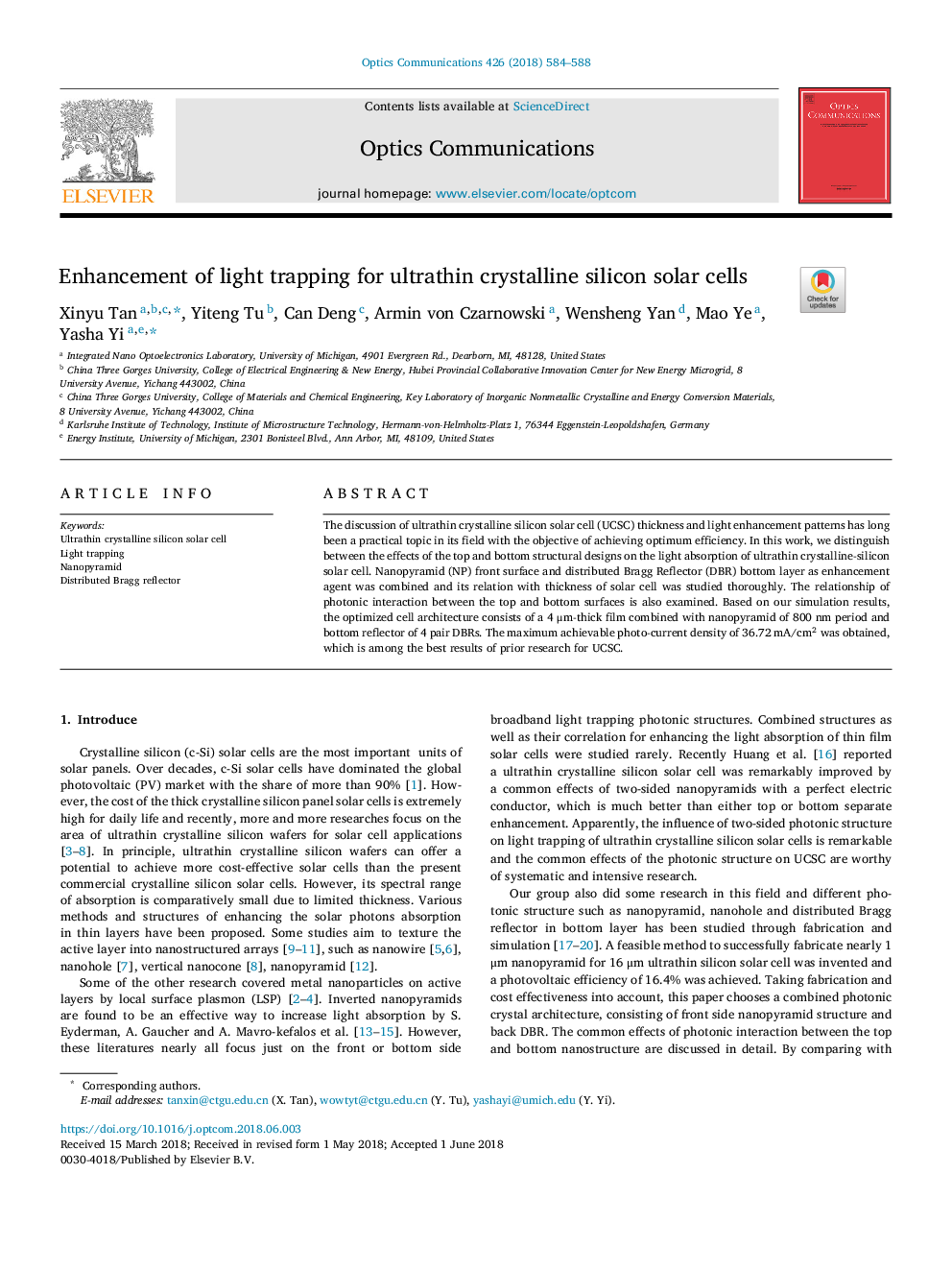| Article ID | Journal | Published Year | Pages | File Type |
|---|---|---|---|---|
| 7924950 | Optics Communications | 2018 | 5 Pages |
Abstract
The discussion of ultrathin crystalline silicon solar cell (UCSC) thickness and light enhancement patterns has long been a practical topic in its field with the objective of achieving optimum efficiency. In this work, we distinguish between the effects of the top and bottom structural designs on the light absorption of ultrathin crystalline-silicon solar cell. Nanopyramid (NP) front surface and distributed Bragg Reflector (DBR) bottom layer as enhancement agent was combined and its relation with thickness of solar cell was studied thoroughly. The relationship of photonic interaction between the top and bottom surfaces is also examined. Based on our simulation results, the optimized cell architecture consists of a 4 μm-thick film combined with nanopyramid of 800 nm period and bottom reflector of 4 pair DBRs. The maximum achievable photo-current density of 36.72 mA/cm2 was obtained, which is among the best results of prior research for UCSC.
Related Topics
Physical Sciences and Engineering
Materials Science
Electronic, Optical and Magnetic Materials
Authors
Xinyu Tan, Yiteng Tu, Can Deng, Armin von Czarnowski, Wensheng Yan, Mao Ye, Yasha Yi,
